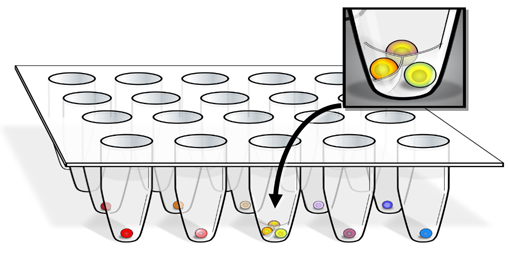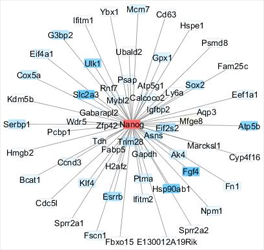Ultimately, cells must organize genes into functional modules of coexpression. How does this process occur and how does it break down in cancer?
A cell state, or the phenotypic behavior of an individual cell, is ultimately is governed by the gene products expressed within. Classically, groups of genes can be controlled together through the action of transcription factors or signalling cascades such as those controlled by kinases, which are often mutated in cancer. We study these behaviours through systems biology approaches to understand the molecular mechanisms in cells that group genes into functional networks. Our early work has focused on enhancers and regulatory RNAs but we are broadly interested in all mechanisms by which cells can organize variation in gene expression at individual loci into functional phenotypes.

Schematic illustrating cell states that are stabilized relative to one another by molecular barriers to interconversion (wells). Some cell behaviors may be more closely related with relatively small barriers to switching between functional cell states.

The interaction neighborhood of the developmental gene Nanog. The degree of blue shading shows relative microRNA activity in regulating each gene. We infer these networks from patterns of covariation amongst genes in single cell data.

